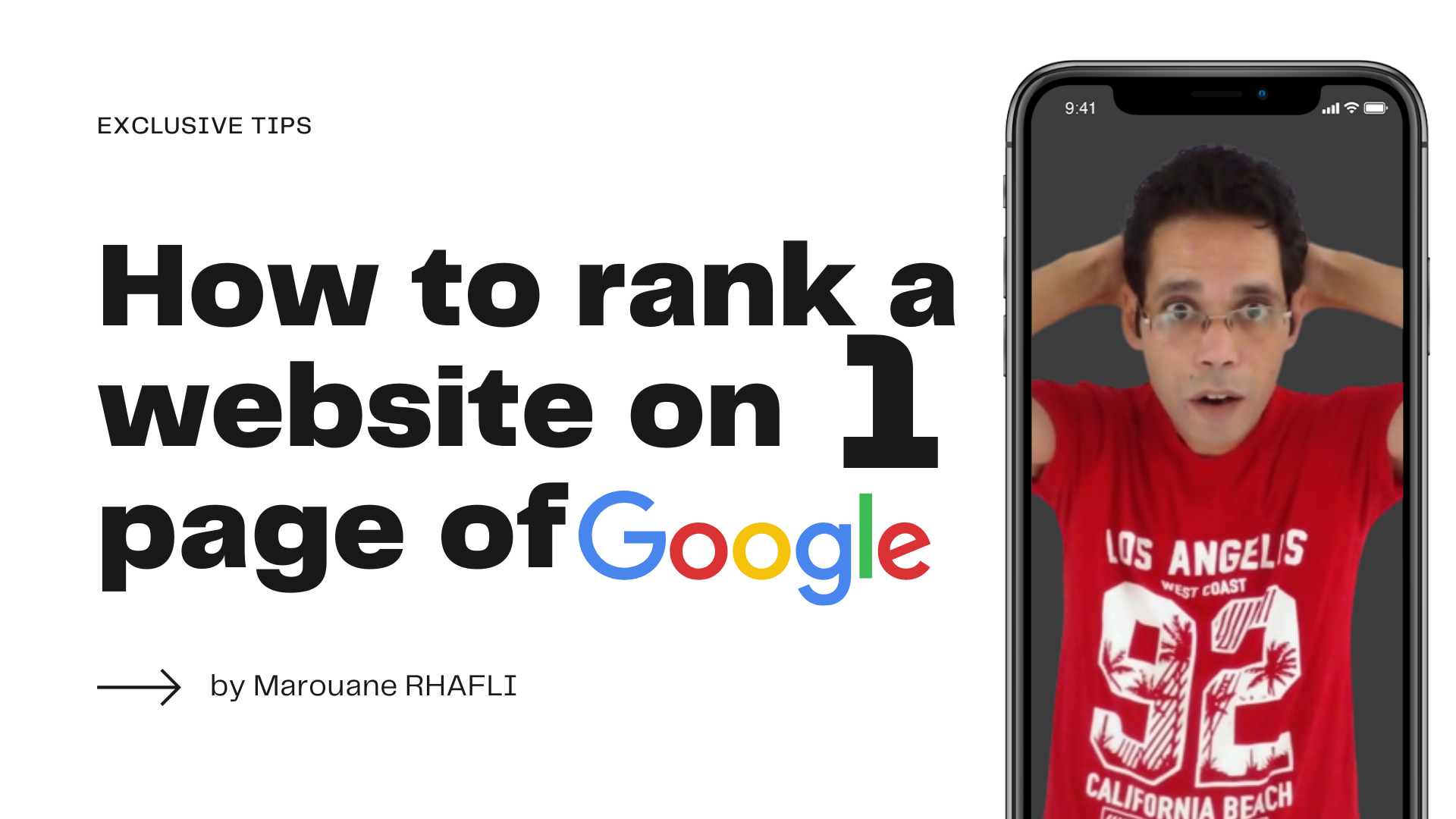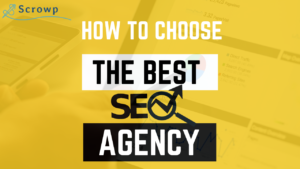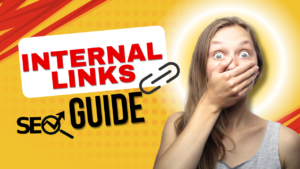
Like many e-merchants, you are probably looking to have your e-store listed at the top of Google results. And you are right ! According to the online advertising network Chikita, the 1st page of the search engine receives 92% of traffic.
The challenge for you is therefore not only to raise your website to the 1st page of Google, but also to position it as high as possible in the ranking!
For this, you need to put in place a powerful natural referencing strategy adapted to your activity. Here are the 5 steps to follow
1- Check the indexing of your site by Google
This is the first step, and the most important, because without it your e-commerce site may not appear in search results.
First, you have to understand how indexing works: when web content is published or updated, Google robots will explore it (this is the crawl phase) to retrieve information. They are recorded in a database, then compared with the other content present in the database. The web pages are then classified and returned in order of relevance when a user performs a search.
To check that your website is indexed by Google, type “site: www.mon-site.fr” in the search bar, replacing “my-site” with your domain name. If you see your pages appear, it means that Google robots have already visited your store and will continue to consult it regularly to detect updates.
Note that in general, the first pages of a site are indexed in the week following its launch. Until then, you can “force” the indexing of your most important pages by submitting their URLs to Google via Search Console.
Once your site is indexed, how do you get the robots to “value” it and place it at the top of the results? With an SEO strategy adapted to meet their expectations!
Indeed, Google bots are based on several criteria to judge a web page:
- Its overall performance
- Update frequency (freshness)
- The quality of published content
- Page Rank (its popularity)
- etc
It is therefore on these axes that you must concentrate your efforts to be positioned on the first page of Google results. An SEO audit will allow you to specify the improvements to be carried out as a priority.
2- Optimize the structure and performance of your site
This is the essential basis for any good SEO strategy: without a reliable and scalable infrastructure, your site will have very little chance of being well referenced. Google favors sites that are fast, well-built, with fluid navigation… everything you need to make things easier for Internet users.
Here are some ways to improve the structure of your site:
Facilitate the circulation of indexing robots, in particular by checking that your robots.txt file does not block access to certain URLs. For more information, we invite you to consult the Google help on this subject.
Fix 404 errors that occur when a page on your site has been deleted and not redirected. You can spot them through tools like Google Search Console.
Offer clear and fluid navigation: your tree structure should not be too deep, i.e. the user should not click more than 4 or 5 times to reach the different pages of your site. We also advise you to work on your internal networking to allow him to access what he is looking for even more easily.
Improve the performance of your site to reduce the loading time of your pages and the display speed of your content. To do this, you can mobilize different levers: suitable hosting, image compression, configuration of your CMS back-office, etc.
Check that your store is responsive, that is to say that it is displayed on mobile as well as on computers and tablets.
All these optimizations will allow you to offer a memorable customer experience, an undeniable asset for the Google algorithm. For a more in-depth diagnosis, you can call on an SEO agency who will give you valuable advice on areas to improve.
Now that you have the structure of your website, let’s see what you are going to put in it!
3- Chose the suitable keywords
A worked keyword strategy will allow you to improve your natural referencing, to generate traffic to your site, but above all to reach the qualified audience you are looking for.
You should always consider:
- The relevance of the keyword to your business, your goals and your buyer personae;
- Its search volume, so as not to put your efforts on a request that is never typed by Internet users;
- SEO competition, i.e. the number and size of sites already positioned on this keyword.
This last point is essential: indeed, there is no need to try to position yourself on the expression “handbag”, because you will be in competition with retail giants such as Amazon, eBay, Etsy… Your chances of reaching the first page of results on this query would be close to 0!
On the other hand, if you turn to long tail keywords (less popular but also less competitive), you will be able to more easily achieve your objectives, and target your audience with precision.
To find these keywords, the easiest technique is to use Google related searches. Start by typing a generic query, like “purse”:

Then scroll down the results page to the “Related searches” section:

You will then have a selection of similar, but more detailed keywords, which can be a starting point for your SEO strategy.
But you can go even further: if you click for example on “women designer handbags”, you will see associated searches that are even longer, and therefore even more targeted and less competitive:

This is the fastest way if you’re new to this, but there are plenty of other ways to define your keywords!
In particular, we advise you to carry out a competitive SEO analysis to find the queries adapted to your sector of activity while standing out from your competitors.
Once your semantic field has been defined, you can use the keywords it contains in the URLs of your pages, the alt text of your images, the texts of your home page, your product sheets… way to reference you on these requests, while taking care not to harm the quality of your content.
4- Create high quality content
Today more than ever, content is king in the field of SEO! Indeed, Google attaches increasing importance to the quality and relevance of web content to rank sites.
By “content”, understand images, videos, computer graphics… but above all web writing, a determining factor for your natural referencing.
To be valued by Google, text content must meet these 3 criteria:
- Original, interesting and of high quality: it must be unique, because Google penalizes duplicate content by de-indexing the pages concerned. When you write your texts, also pay attention to spelling and grammar mistakes, and always think of your readers: if they enjoy reading you and find all the answers to their questions, it means that your content is successful
- Concise and understandable: your texts must be accessible and respond to specific requests. You can rely on one of the golden rules of SEO: 1 page = 1 target keyword (except for the homepage)!
- Adapted to Google’s requirements: be sure to use HTML markup, which will help indexing robots better find their way through your content. In general, make sure to optimize the meta elements (tags, meta description, URL, etc.) according to your SEO strategy.
It is essential to publish new content regularly, in order to show Google that your site is active. In this sense, it may be wise to keep a blog: it will allow you to generate traffic to your store and improve your internal networking.
We advise you to establish an editorial calendar and stick to it, by publishing weekly or bimonthly for example. The game is worth the candle, since Google rewards these efforts with better rankings in search results.
Finally, your blog posts are likely to be shared on third-party sites and social networks. However, as we will see in the next part, external links are essential for SEO.
4- Establish a net-linking strategy
Netlinking is a strategy that consists of increasing the number of incoming links (backlinks) to your online store or blog. This is an essential aspect to improve your notoriety and your positioning, because Google favors in its ranking sites with many references.
How to get these backlinks? Several options are available to you: you can collaborate with media or influencers so that they refer to your shop, have you referenced on the site of your local chamber of commerce, write guest articles on other blogs… The most important, for an effective netlinking strategy, being to target websites related to your sector of activity.
Indeed, social networks are an inexhaustible source of backlinks: your posts can be shared and re-shared, generating a large number of visits to your store.
Our article is coming to an end! You now have all the keys in hand to carry out SEO optimizations on your site, obtain relevant backlinks, and thus maximize your chances of reaching the 1st page of Google results.
Final thoughts
To sum up, you must think of your natural referencing strategy as a pyramid: the base is the technical basis of your site, which supports all the bricks that we have mentioned to improve your positioning (keywords, content, netlinking and social networks) .






To rank your website on Google using SEO techniques, focus on keyword research, high-quality content creation, on-page optimization (meta tags, headings), mobile-friendliness, fast loading speed, secure website (HTTPS), quality backlinks, and user experience. Regularly update your content, and engage in social media promotion and local SEO strategies for better visibility.